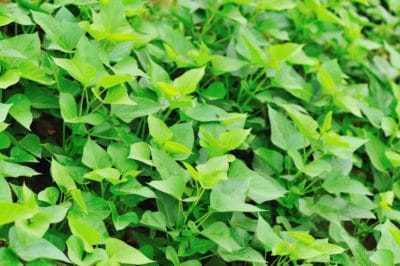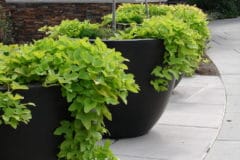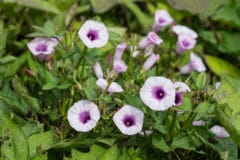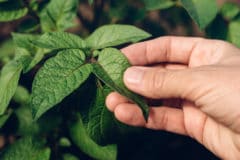Sweet Potato Growing Requirements
Sweet potatoes need certain environmental characteristics to grow and thrive. These include:
- A frost-free growing season at least 150 days long.
- Soil and nighttime temperatures of 60°F (16°C) at planting time.
- Loose, friable soil of moderate fertility.
- At least one inch of water per week during the growing season.
- Full sun, preferably 10 hours or more per day.
Climate and Sweet Potatoes
Sweet potatoes are most likely to become reliable perennial vines in USDA Zones 9 through 11. If you live in those areas, treat it much as you would any perennial. Allow the vines to die back naturally. Some people grow ornamental varieties for just this reason rather than growing them as an edible vegetable. In spring, cut back the dead vines.
If It Freezes
A hard frost will kill the top growth of a sweet potato vine. If the roots survive, the plant will come back. Mulches help protect the roots and insulate the soil. Use something with plenty of volume, like straw. Start with at least eight inches. You may need to add more straw over the winter as rains pack down the mulch.
Sweet Potatoes in Containers
A container makes the sweet potato plant more vulnerable to freezing weather. The small soil volume and lack of insulating soil cover mean that the pot may freeze very quickly if unprotected. However, containers are moveable. Bring the plant indoors to a greenhouse or sunroom where the minimum temperature is 55°F (13°C). Make the sure the container is getting enough light.
About the Tubers
If you’re growing your sweet potatoes to eat, you will probably have trouble turning it into a perennial. For one thing, you need to harvest the tubers, which disturbs the remaining roots and kills the tops. For another, the tubers left in the ground may rot in cold, rainy winters. You could try carefully harvesting tubers on one side of the plant and leaving the remainder.












